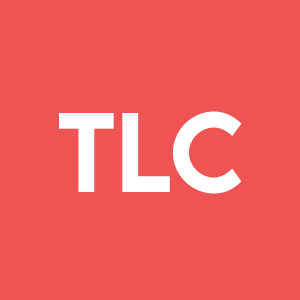Manuscript Describes How TLC’s Inhalable Liposomal Hydroxychloroquine May Provide Clinical Benefit and Serve as Potential Treatment for COVID-19
TLC, a clinical-stage specialty pharmaceutical company, has released a pre-print manuscript detailing its strategy for treating COVID-19 using inhalable liposomal hydroxychloroquine. This formulation aims to deliver higher drug concentrations directly to the lungs while minimizing systemic exposure. Nonclinical studies indicate inhalable liposomal HCQ achieves about 30-fold increased lung exposure compared to traditional oral HCQ. TLC's President emphasized the urgency of developing effective treatments during the pandemic, and the manuscript is currently under peer review for publication.
- Inhalable liposomal hydroxychloroquine showed approximately 30-fold increased exposure in the lungs.
- The new formulation could reduce systemic and cardiac toxicities associated with high-dose oral HCQ.
- Oral HCQ has shown inconclusive results in clinical trials, raising concerns about its efficacy.
SOUTH SAN FRANCISCO, Calif. and TAIPEI, Taiwan , July 15, 2020 (GLOBE NEWSWIRE) -- TLC (Nasdaq: TLC, TWO: 4152), a clinical-stage specialty pharmaceutical company developing novel nanomedicines to target areas of unmet medical need, today announced that a pre-print version of a manuscript on TLC’s strategy to treat COVID-19 disease with targeted delivery of inhalable liposomal hydroxychloroquine has been made publicly available.
Hydroxychloroquine (HCQ) is an anti-malarial and anti-inflammatory drug that has been shown to inhibit SARS-CoV-2 infection in vitro and tested in clinical studies. However, recent clinical trials studying orally ingested HCQ have shown inconclusive results due to the extremely high doses required to achieve effective antiviral levels. The manuscript describes a nonclinical pharmacokinetics study in which, comparing equivalent doses of inhalable liposomal HCQ to intravenous (to represent oral) unformulated HCQ, inhalable liposomal HCQ achieved increased exposure (~30-fold) and half-life (~2.5-fold) in the lungs while also achieving lower blood and heart exposure. Moreover, the study results suggest a sustained release, liposomal formulation of HCQ might provide preferentially higher concentrations in the lung than an aerosolized, non-liposomal HCQ formulation, which is retained in the lung only transiently and distributed rapidly from lung to systemic circulation. An inhalable liposomal formulation of HCQ would require significantly lower doses - a tiny fraction of the oral dose - to achieve sufficient and locally sustained drug exposure in the lungs, reducing the systemic and cardiac toxicities commonly seen with high doses of oral HCQ.
“A global pandemic requires a global effort. In these unprecedented times, we should all put the wellbeing of the people first and do what we can to help,” said George Yeh, President of TLC. “TLC has long been aware of the advantages of inhalable liposomal formulations in the treatment of infectious and inflammatory lung diseases, and we are grateful to have started the development of a potential treatment for COVID-19 before it became a pandemic. We hope that the promising results seen in our animal studies will draw attention from organizations around the world and result in a global and expedited development of inhalable liposome HCQ to deliver a potential treatment that the world needs as quickly as possible.”
The manuscript, entitled “A Strategy to Treat COVID-19 Disease with Targeted Delivery of Inhalable Liposomal Hydroxychloroquine: A Non-clinical Pharmacokinetic Study”, has been submitted for publication and is currently under peer review. The pre-print full manuscript can be accessed at the following link:
https://www.biorxiv.org/content/10.1101/2020.07.09.196618v1.full.pdf
About COVID-19
Coronaviruses are a family of viruses that can lead to respiratory illness, including Middle East Respiratory Syndrome (MERS-CoV) and Severe Acute Respiratory Syndrome (SARS-CoV). Coronaviruses are transmitted between animals and people and can evolve into strains not previously identified in humans. The COVID-19 pandemic is a global emergency with 13.3 million confirmed cases and over 578,000 deaths. It has made many more to be stricken with debilitating respiratory illnesses, overwhelmed health care workers and hospitals, and caused crippling of the global economy. At this time, there are no specific vaccines or treatments for COVID-19.
About TLC
TLC (NASDAQ: TLC, TWO: 4152) is a clinical-stage specialty pharmaceutical company dedicated to the research and development of a diverse, wholly owned portfolio of novel nanomedicines that maximize the potential of its proprietary lipid-assembled drug delivery platform (LipAD™), including BioSeizer® sustained release technology and NanoX™ active drug loading technology, which are versatile in the choice of active pharmaceutical ingredients and scalable in manufacturing.
Contact Dawn Chi Corporate Communications
FAQ
What is TLC's new strategy for treating COVID-19?
How does inhalable liposomal HCQ compare to oral HCQ?
What are the benefits of inhalable liposomal HCQ?
Is TLC's manuscript on inhalable liposomal HCQ published?







